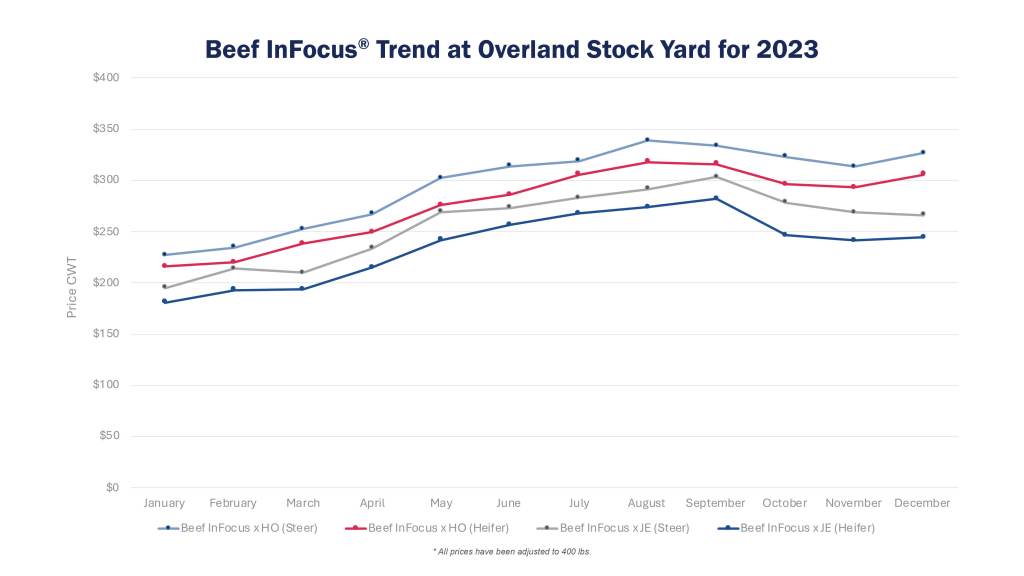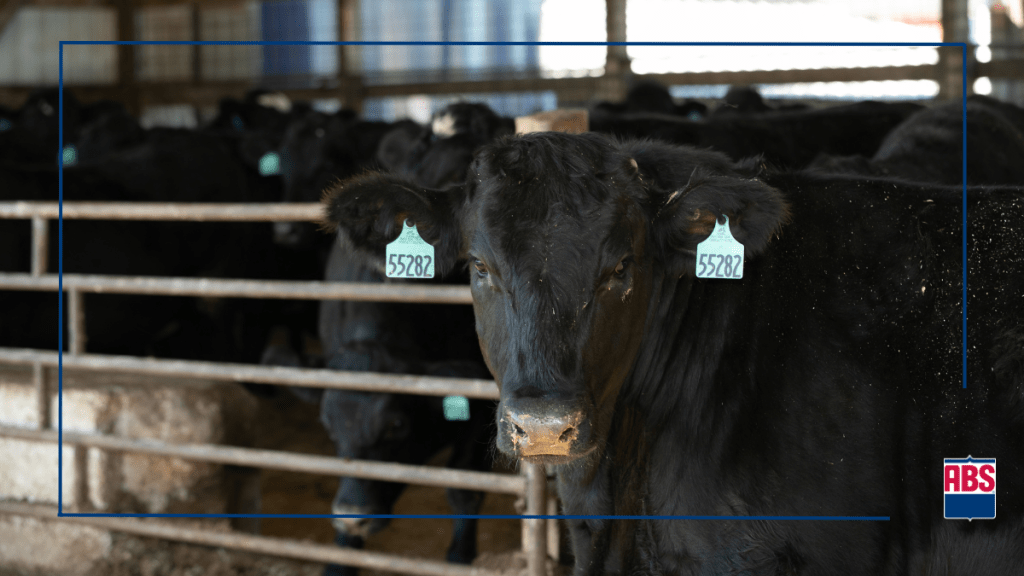Publish date: 2.16.24
Burgers, brisket, steaks, and roasts are just a few ways beef finds its way to our dinner tables. Recent years have shown a steady increase in the consumption of beef during consumer meals. This growing demand around the world has positioned high-quality beef as a key animal protein source. As a dairy producer, you might be asking, “So what does that mean for me?”
The concept is simple, really. It is all about supply and demand. As consumer demand for beef protein increases, the need to find a consistent supply of healthy, predictable, and profitable animals to fill feedyards and processors also increases. This is where dairy producers have an opportunity to create high-quality beef cross calves if utilizing the right beef genetics. Thus, increasing overall profitability.
Increased Desire for Beef Cross Calves
Cattle feeders are willing to bid high for high-quality feeder cattle, and the market shows this all the time. But why? The fact of the matter is the native beef cow herd population is at an all-time low and not expected to return. This means cattle buyers, feeders, and processors are in desperate need to continue to fill their spaces while maximizing profitability on all feeder cattle entering their system.
With the sheer volume of beef cross calves flowing into the beef supply chain today, it is evident that beef cross calves bring many positives to the chain from genetics to consumers. Data collected throughout the chain indicates the beef cross works well for feeder cattle as the calves are proving to perform better than their dairy contemporaries and similarly to native beef.
While performance and profitability are key, the opportunity to create a consistent supply of high-quality and traceable feeder cattle speaks volumes to continue creating high-quality beef cross calves.
Things to Consider from a Beef Supply Chain Perspective
Historically, understanding the ins and outs of the beef chain supply has not been top of mind for dairy producers. However, changes in the beef industry landscape and the opportunity to increase revenue now require dairy producers to make themselves aware of the workings of the beef supply chain. This knowledge could be vital in ensuring no money is on the table on sale day and help you ask the right questions to stay informed.
Here are a few beef industry terms to be aware of as you go to sell your beef cross calves:
- Freight: This describes the cost of transportation a feedyard will incur to haul the feeder cattle purchased to their yard. As feedyards bid on cattle from a distance, they must consider the amount of freight it takes to haul them to their yard. As video auctions with consignments from a wide range of locations grow in popularity, this explains why some groups may show a competitive sale price due to the relatively close location of the calf ranch to the feedyard.
- Load Transportation: Loads refer to the group of cattle. Short-hauled loads are not only cheaper on freight but have the potential to have fewer health challenges as compared to longer-hauled cattle.
- Single-Sexed Loads: Some consignments will choose to sell as mixed-sexed loads, meaning the load includes steers and heifers combined. Other consignors may elect to sell single-sexed loads, meaning all steers or all heifers if they have the volume to split. Single-sexed loads are more preferred which could impact the selling price positively.
- Delivery Date: This term indicates the process and date on which the seller will deliver the cattle to the specified shipping or delivery point and signifies the transaction is completed with the ownership of the livestock passing to the buyer. Delivery dates often vary for each list and could influence the sale price.
- Genetics of Dairy Base: As more beef cross calves enter the marketplace, take special notice of the genetic base of each listing. Lots could be beef on Holstein dams, beef on Jersey dams, Holstein Jersey crosses, etc.
Beef InFocus Outperforms at Overland Stock Yard
December presented an excellent performance by Beef InFocus cattle at the Overland Stock Yard Auction. Beef InFocus-sired beef cross calves out of Holstein dams outperformed all the competitor consignments with over 1500 steers and heifers in the sale. For beef crosses out of Jersey dams, Beef InFocus-sired calves had a clear stronghold in value-added cattle over the competitors.
Here are the key takeaways on how Beef InFocus-sired calves performed.
- Beef InFocus-sired steers out of Holstein dams weighing 400 pounds topped the market at $326.50 per hundredweight or $1,306 per head.
- Beef InFocus-sired heifers of Holstein dams weighing 400 pounds held a strong market value at $305.50 per hundredweight or $1,222.00 per head.
- Beef InFocus-sired steers out of Jersey dams weighing 400 pounds rung the bell at $266.11 per hundredweight or $1,064.44 per head.
- Beef InFocus-sired heifers out of Jersey dams weighing 400 pounds brought $244.50 per hundredweight or $978.00 per head.
Trendline for Beef InFocus Against Native Beef and Holstein
The trend lines below for Beef InFocus sired steers and heifers at the Overland Stock Yard Auction validate the consistent and profitable results that can be achieved with Beef InFocus. This further backs Beef InFocus as the premier beef on dairy program designed specifically for dairy producers looking to make the sought-after beef cross calves.

Have the Advantage with Beef InFocus
Beef InFocus is truly beef on dairy but not like you’ve seen before. It is the only program proven for dairy performance with beef supply chain marketability. Beef InFocus sires are specifically selected for the key profit drivers of the beef supply chain—growth, feed efficiency, and carcass quality. Our program is the only beef on dairy program that tests and hand-picks bulls based on dairy performance, so you can assure consistent performance when selecting beef sires. Finally, Beef InFocus is the only program with full supply chain market access. We created this program with the dairy producer in mind, so you can focus on running your dairy and achieving your goals.
To learn more about creating more valuable beef cross calves and maximize profitability, contact your ABS Genetic Advisor or complete the form below.







